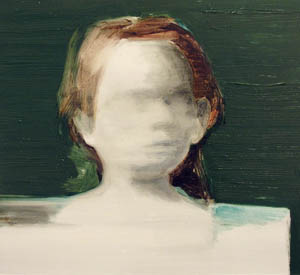Another question I recently received was: “I am young and don’t have a lot of money to build a collection. What can an expert like you tell me about finding art and for filling my space until my collection is bigger?”
One can learn to collect at any price point. For those of you who do not have a real art buying budget there are some ways that you can begin to collect pieces or objects that you enjoy — think of it as practicing with something you can afford.
One idea is to pick a topic that you like, such as bicycles, and start a collection of images depicting bicycles. Look on the internet and at flea markets for old cycling images, photographs, vintage bicycle advertisements or reproductions of vintage posters employing the bicycle motif. You should be able to find all sorts of things to purchase within a reasonable budget. Head to an art supplies shop to find ready made frames and mats to save yourself the expense of custom frames for inexpenive items.
In addition to practicing how to collect, there are some other things you can do as space fillers that are visually pleasing as well. One great and inexpensive idea is to buy a nice quality calendar such a those published by Cavallini and frame and mat them nicely to hang in groups around your space. You can also buy vintage postcards and maps of a place that means something to you and frame them up as discussed above. All you will need to do is hang them in an interesting way, and there you have some great wall hangings. Finally, fabric wall hangings are another fantastic way to go. You can get them in a variety of sizes and they are colorful yet inexpensive.
Another one of my favorite tricks is to purchase a series of botanical prints which came out of old botanical studies books. A group of these framed all the same way and hung in a large group can fill a large wall, even though the prints themselves are small. I bought a set of nine William Morris egg prints on eBay a few years ago for $39 (the same ones I now see at art fairs for $200 per piece!). I framed them in very simple ready-made contemporary mats and frames and hung all nine together on a wall (three rows of three), and my little prints now make a very large statement.
In a few years you might be ready to move on to begin a more traditional “art collection” with paintings, photographs or sculptures but you will have probbly learned how to look at and gather (i.e. collect) via your starter collections.
You could also start your own fine art collection, when you get to that point, by collecting something like prints which tend to be a good foray into the art market. Some auction houses have print auctions in which they sell lower-priced prints by well-known artists, and you really would be surprised at what/who you can afford to buy. Prints range in style from very traditional to very abstract and contemporary. Chances are that if you do a lot of looking you will find something you like. (Don’t forget, you can often bid on-line, but it is always best to inspect the item you wish to buy in person if you can.)
No matter how much money you have (or don’t have) to spend on art, there is something personal and unique about a collection that often tells a lot about the person who compiled it.
Happy hunting!

